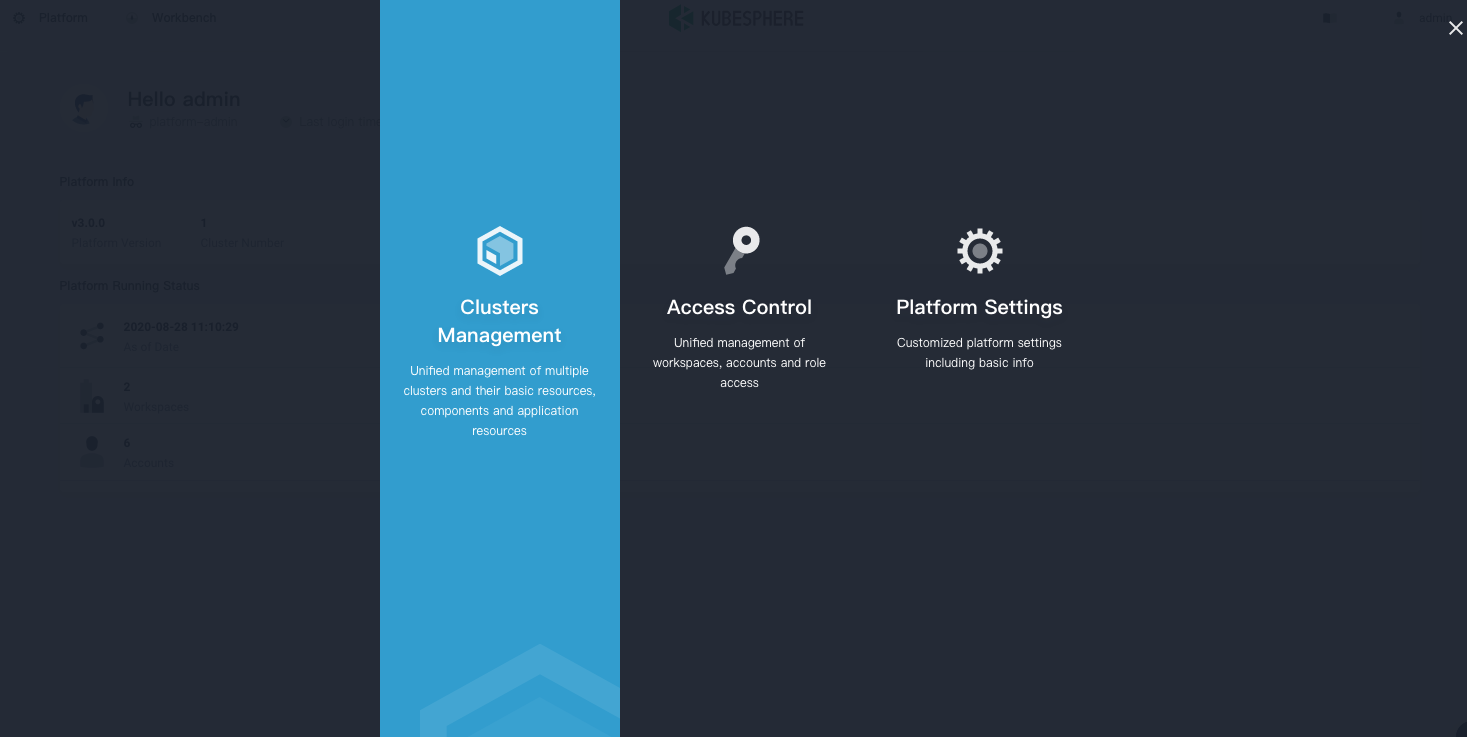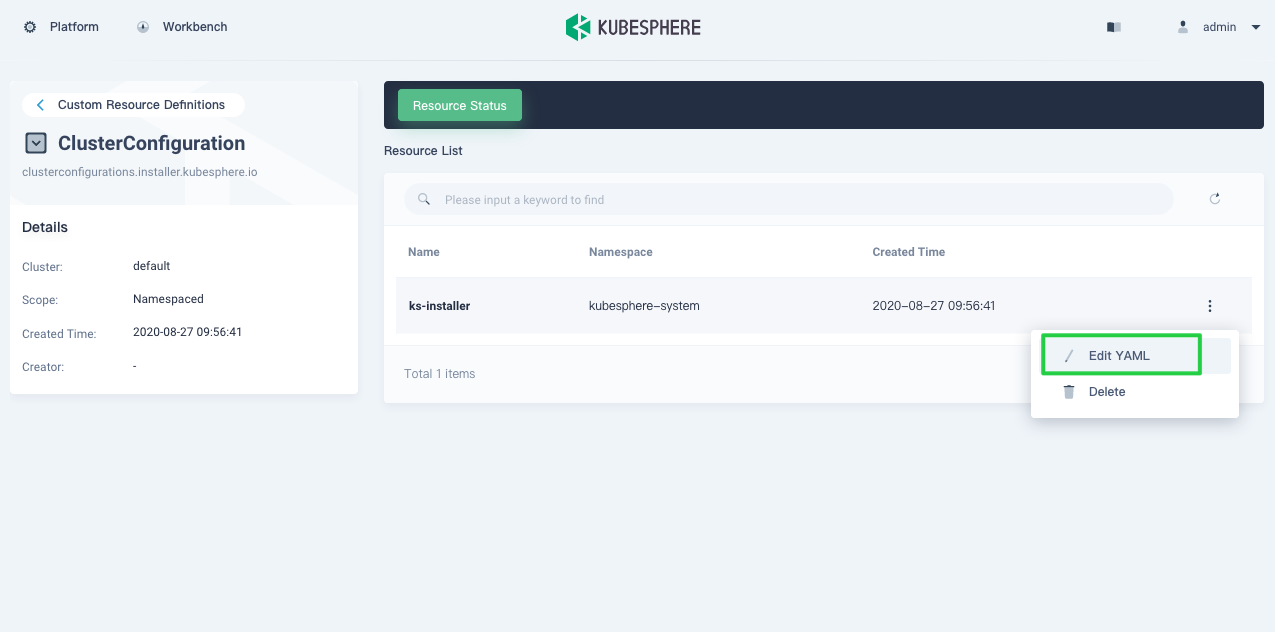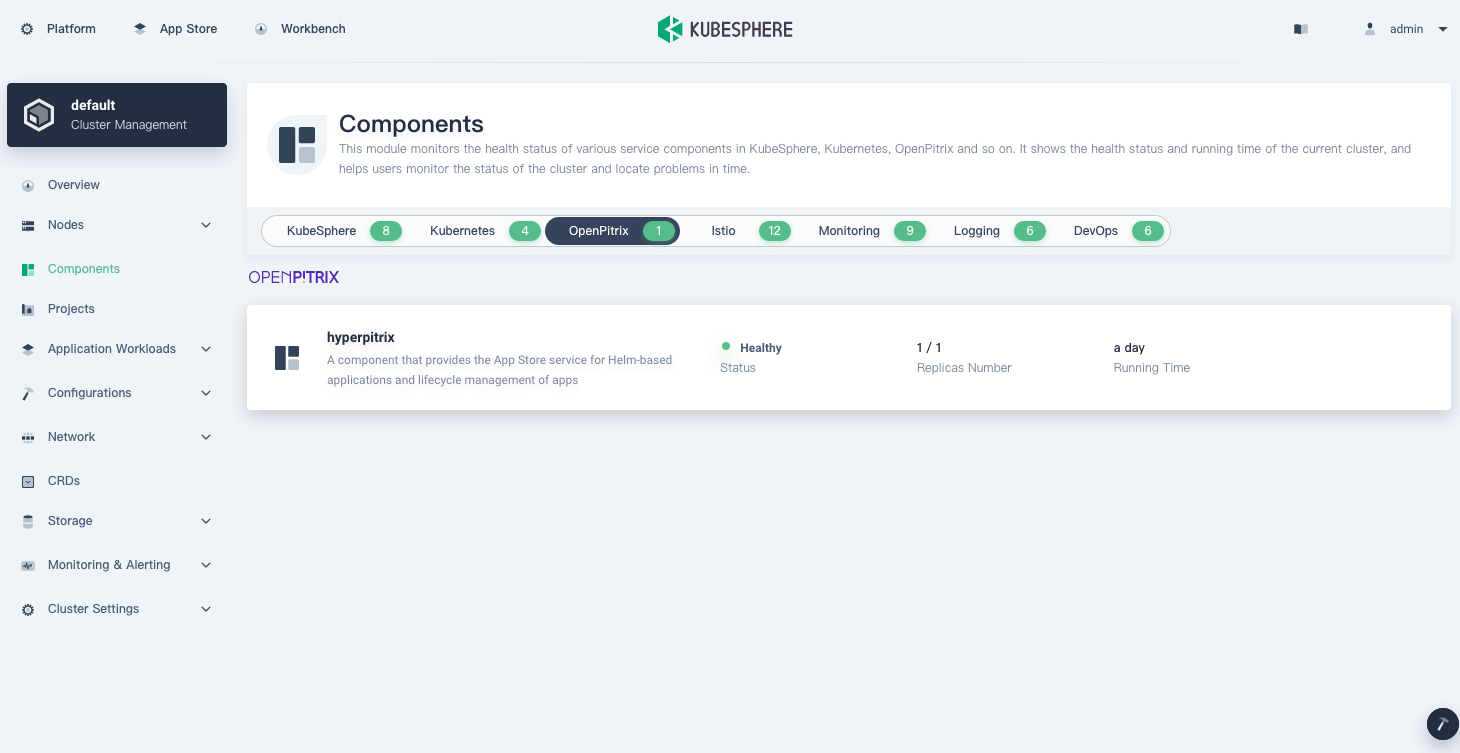
You are viewing documentation for KubeSphere version:v3.0.0
KubeSphere v3.0.0 documentation is no longer actively maintained. The version you are currently viewing is a static snapshot. For up-to-date documentation, see the latest version.
KubeSphere App Store
What is KubeSphere App Store
As an open-source and app-centric container platform, KubeSphere provides users with a Helm-based app store for application lifecycle management on the back of OpenPitrix, an open-source web-based system to package, deploy and manage different types of apps. The KubeSphere App Store allows ISVs, developers and users to upload, test, deploy and release apps with just several clicks in a one-stop shop.
Internally, the KubeSphere App Store can serve as a place for different teams to share data, middleware, and office applications. Externally, it is conducive to setting industry standards of building and delivery. By default, there are 15 built-in apps in the App Store. After you enable this feature, you can add more apps with app templates.

For more information, see App Store.
Enable the App Store before Installation
Installing on Linux
When you implement multi-node installation of KubeSphere on Linux, you need to create a configuration file, which lists all KubeSphere components.
-
In the tutorial of Installing KubeSphere on Linux, you create a default file
config-sample.yaml. Modify the file by executing the following command:vi config-sample.yamlNote
If you adopt All-in-One Installation, you do not need to create aconfig-sample.yamlfile as you can create a cluster directly. Generally, the all-in-one mode is for users who are new to KubeSphere and look to get familiar with the system. If you want to enable the App Store in this mode (for example, for testing purposes), refer to the following section to see how the App Store can be installed after installation. -
In this file, navigate to
openpitrixand changefalsetotrueforenabled. Save the file after you finish.openpitrix: enabled: true # Change "false" to "true" -
Create a cluster using the configuration file:
./kk create cluster -f config-sample.yaml
Installing on Kubernetes
The process of installing KubeSphere on Kubernetes is same as stated in the tutorial of Installing KubeSphere on Kubernetes except the optional component App Store needs to be enabled first in the cluster-configuration.yaml file.
-
Download the file cluster-configuration.yaml and open it for editing.
vi cluster-configuration.yaml -
In this local
cluster-configuration.yamlfile, navigate toopenpitrixand enable the App Store by changingfalsetotrueforenabled. Save the file after you finish.openpitrix: enabled: true # Change "false" to "true" -
Execute the following commands to start installation:
kubectl apply -f https://github.com/kubesphere/ks-installer/releases/download/v3.0.0/kubesphere-installer.yaml kubectl apply -f cluster-configuration.yaml
Enable the App Store after Installation
-
Log in to the console as
admin. Click Platform in the top-left corner and select Clusters Management.
-
Click CRDs and enter
clusterconfigurationin the search bar. Click the result to view its detail page.Info
A Custom Resource Definition (CRD) allows users to create a new type of resources without adding another API server. They can use these resources like any other native Kubernetes objects. -
In Resource List, click the three dots on the right of
ks-installerand select Edit YAML.
-
In this yaml file, navigate to
openpitrixand changefalsetotrueforenabled. After you finish, click Update in the bottom-right corner to save the configuration.openpitrix: enabled: true # Change "false" to "true" -
You can use the web kubectl to check the installation process by executing the following command:
kubectl logs -n kubesphere-system $(kubectl get pod -n kubesphere-system -l app=ks-install -o jsonpath='{.items[0].metadata.name}') -fTip
You can find the web kubectl tool by clicking the hammer icon in the bottom-right corner of the console.
Verify the Installation of the Component
Go to Components and check the status of OpenPitrix. You may see an image as follows:

Execute the following command to check the status of Pods:
kubectl get pod -n openpitrix-system
The output may look as follows if the component runs successfully:
NAME READY STATUS RESTARTS AGE
hyperpitrix-generate-kubeconfig-pznht 0/2 Completed 0 1h6m
hyperpitrix-release-app-job-hzdjf 0/1 Completed 0 1h6m
openpitrix-hyperpitrix-deployment-fb76645f4-crvmm 1/1 Running 0 1h6m
Use the App Store in a Multi-cluster Architecture
In a multi-cluster architecture, you have one Host Cluster (H Cluster) managing all Member Clusters (M Clusters). Different from other components in KubeSphere, the App Store serves as a global application pool for all clusters, including H Cluster and M Clusters. You only need to enable the App Store on the H Cluster and you can use functions related to the App Store on M Clusters directly (no matter whether the App Store is enabled on M Clusters or not), such as app templates and app repositories.
However, if you only enable the App Store on M Clusters without enabling it on the H Cluster, you will not be able to use the App Store on any cluster in the multi-cluster architecture.













 Previous
Previous
